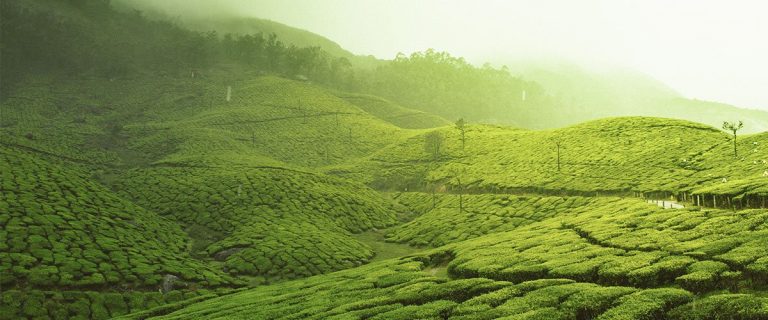Munnar is a part of the mountain range of the Western Ghats that line the western coast of India. Located in the state of Kerala, at about 1500m altitude, it is one of south India’s popular tourist spots, and tea regions. Like the Nilgiris, Munnar too is part of the shola range, enjoying a similar biosphere.
Munnar was once part of the Travancore kingdom. Its British resident John Daniel Munro is thought to be the first European to visit Munnar in the1870s. Apparently, Munro was called upon to settle a dispute between the princely states of Travancore and Madras. Enroute, he stopped at Munnar and found it beautiful. These hills, the Kannan Devan hills, at that time, belonged to the local prince, Kela Varma Raja. Munro went to see him in his palace and the prince agreed to his request and leased 136,600 acres to him. The price was a security deposit of Rs. 5,000 and an annual rent of Rs. 3,000. And the year was 1877.
By 1879, Munro had formed the North Travancore Land Planting & Agricultural Society and its members began cultivating various crops until tea was introduced in 1880 by AH Sharp. Soon, the Finlay Muir & Company entered the region, acquiring over 30 estates.
Things were progressing well until in 1924, Munnar suffered a setback with one of the heaviest recorded monsoons. Heavy landslides and flooding led to loss of lives, and also of property. It took several years for the community to regain their footing. The Finlay Company merged with the Tatas in 1964, as the Tata-Finlay Group. By 1983, Tata Tea had officially been created.
In 2005, the Tatas decided to exit the business. In an unexpected but welcome move, they proposed a participatory management model where the business was handed over to the employees. With 98% of the 13,000 workers owning around 68% of the Kannan Devan Hill Plantation estate (18% remains with Tata Tea and 14% by a trust and other stakeholders), each worker holds a minimum of 300 shares.
A loss-making industry was turned around to become profitable once more. In Munnar, such a model has worked well both for the industry and the workers.
By this time, Munnar grew in popularity among tourists, for its pleasant weather, and beautiful landscapes. With the Munnar tea plantation, tea and tourism became its twin attributes. Today, Munnar is a popular tourist destination, and a common addition to the itinerary of the visiting tourists, the Munnar tea museum is also India’s first tea museum.
A trip to Munnar will be incomplete without a visit to the tea garden in Munnar or the Munnar tea estate. While you’re there you can even stay at a tea valley resort to experience the best tea in Munnar. The Munnar tea factory is another place you would love to visit if you want to understand the tea making process and discern learn about the best kind of tea and its relevance to the area.
What to expect from the Munnar tea
The Munnar orthodox tea is defined by a clean and biscuity aroma. It’s strong and brisk, making a rounded cup.

Comments are closed.